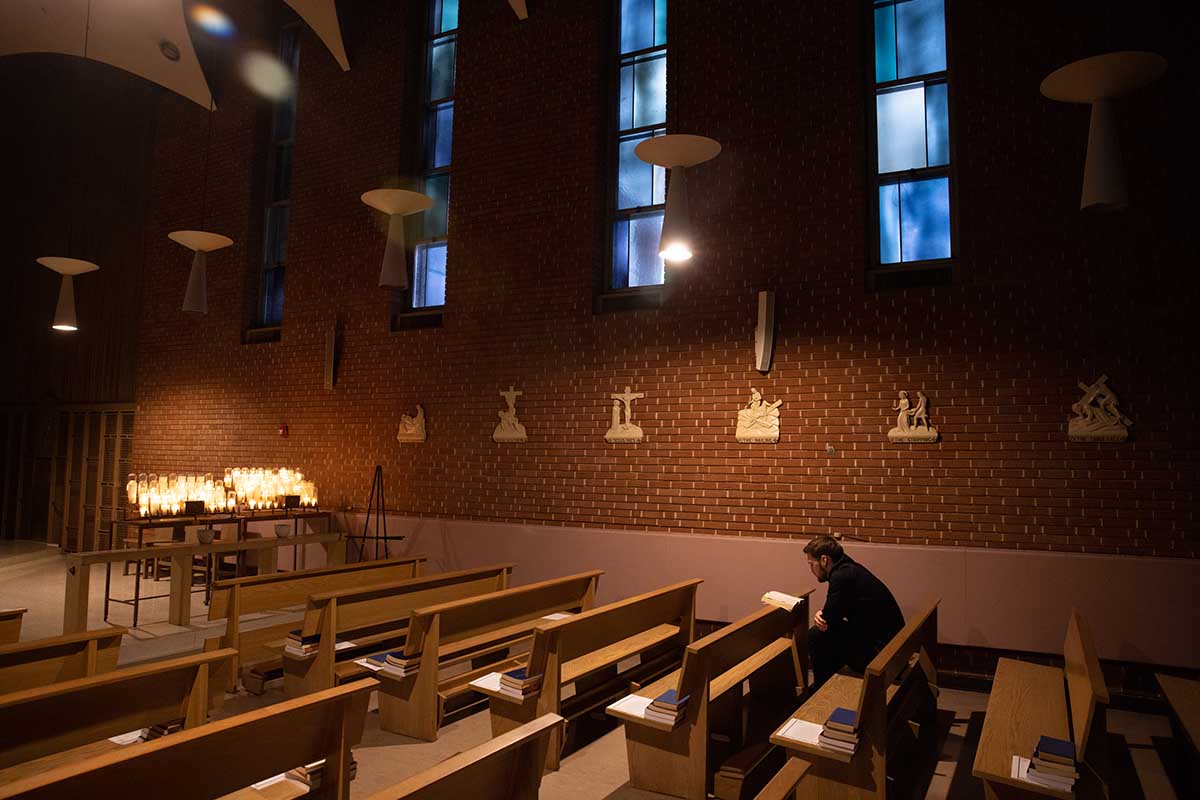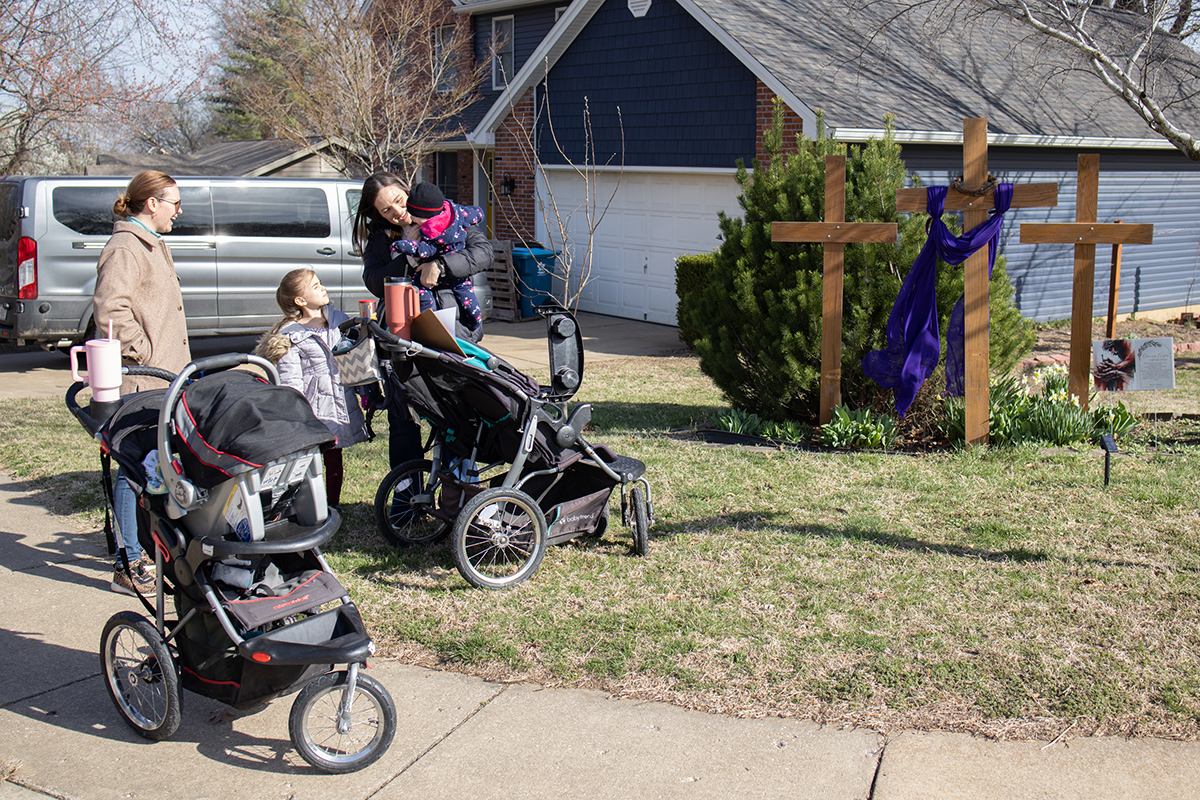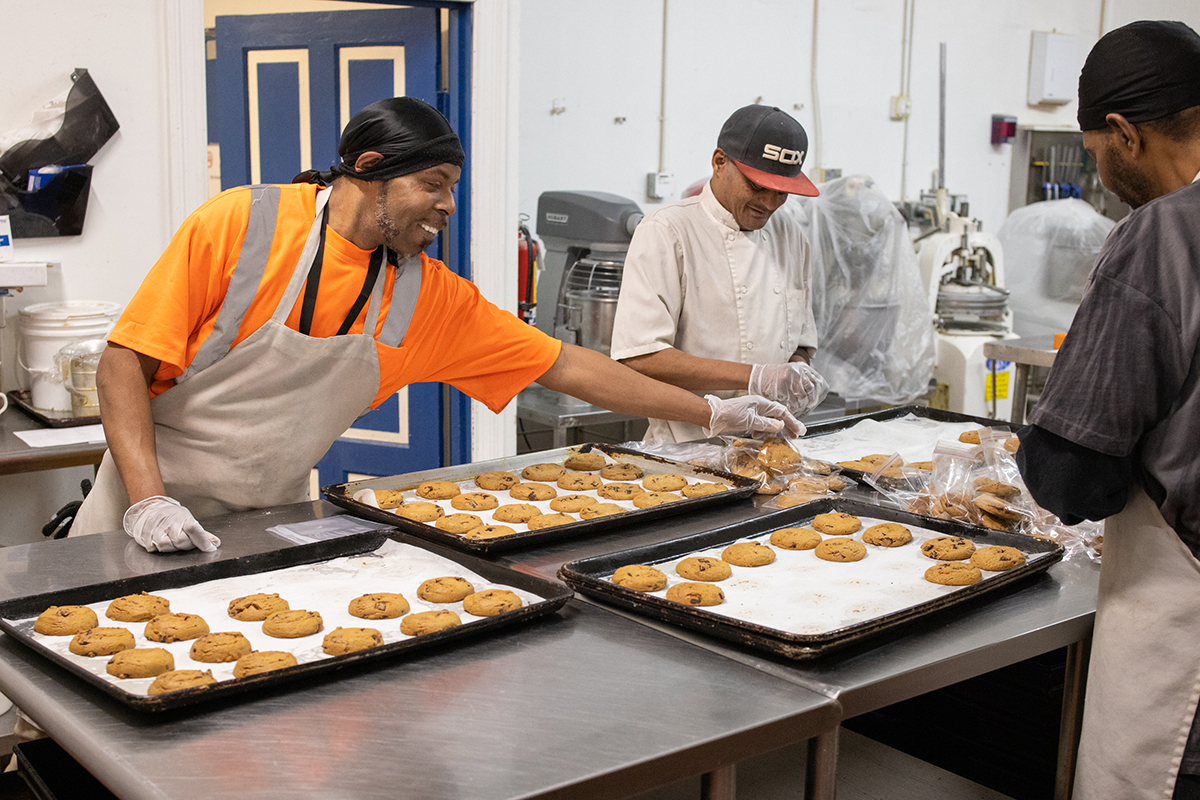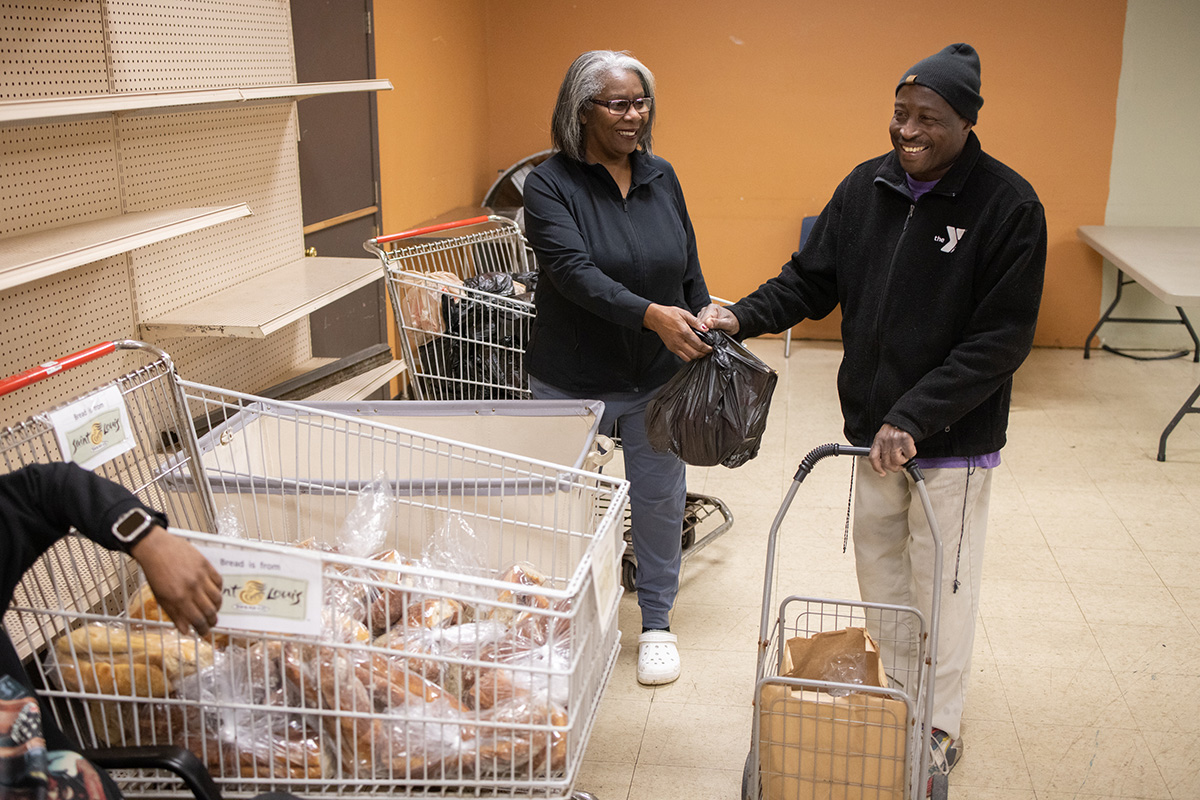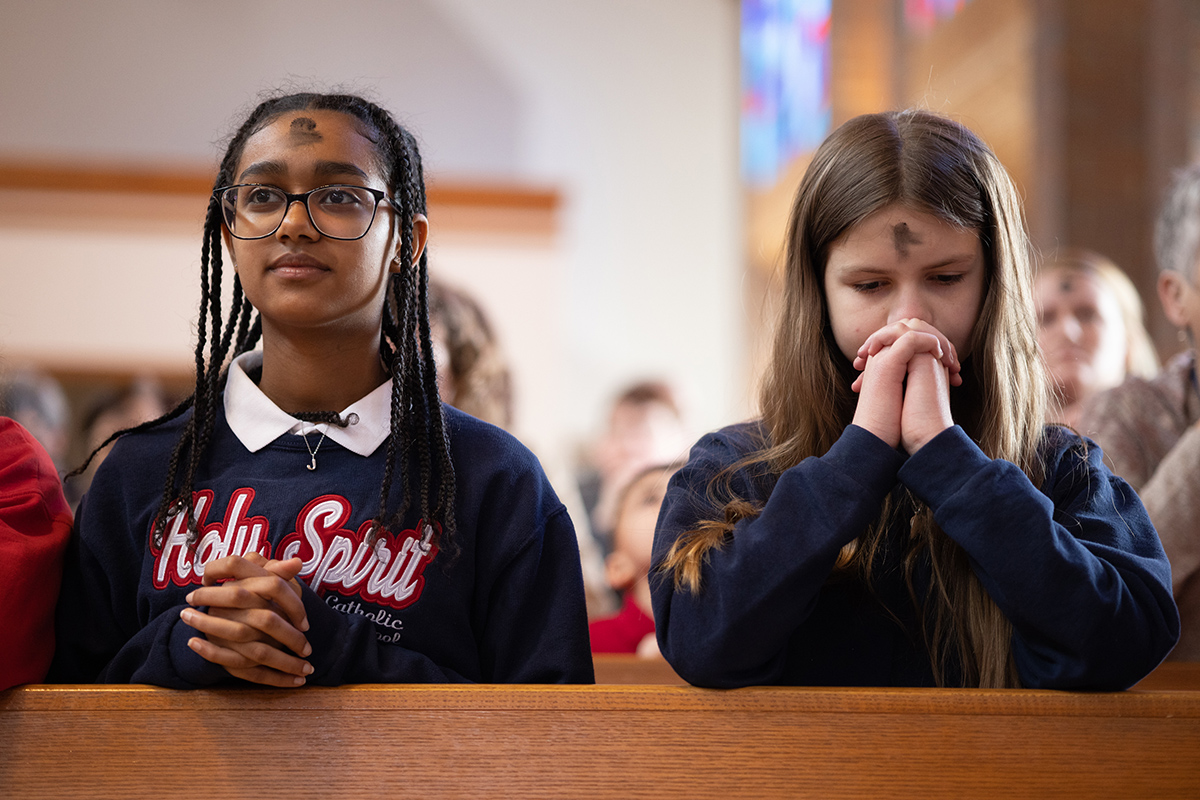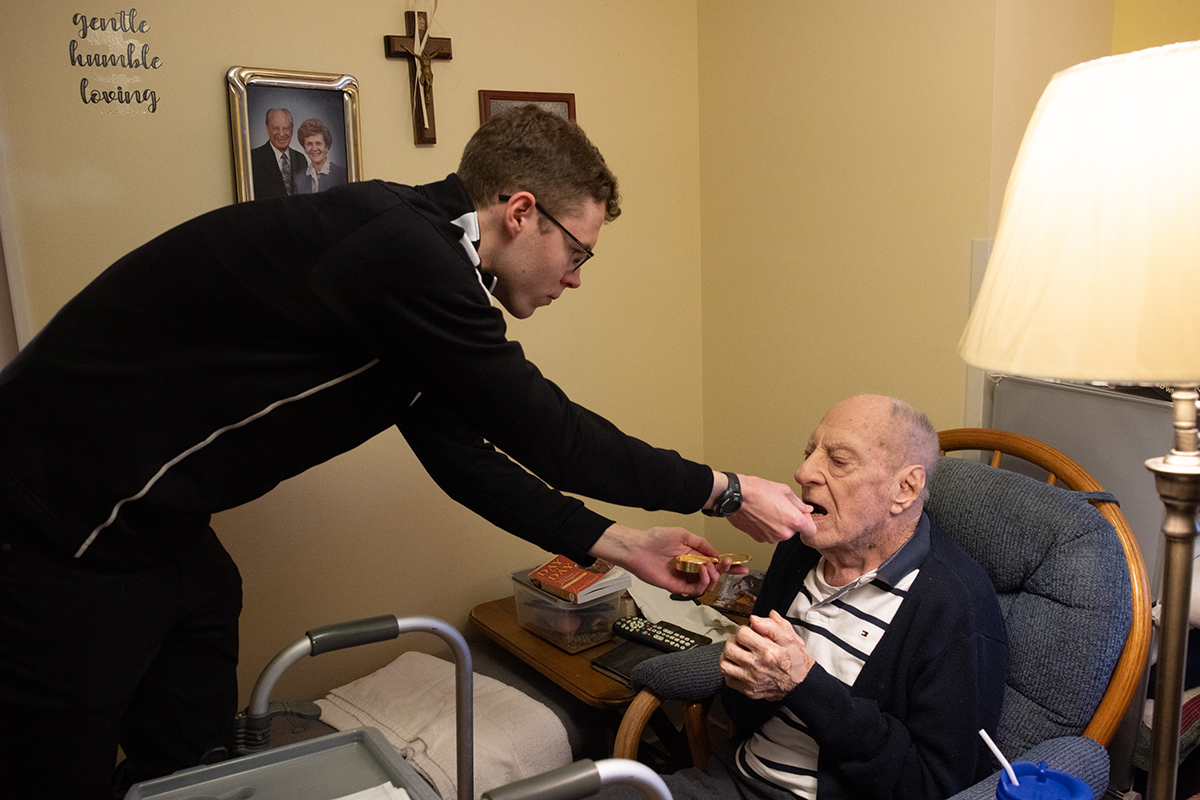All Saints Parish in St. Peters remembers the lives of the saints, holy souls through activities to evangelize the community
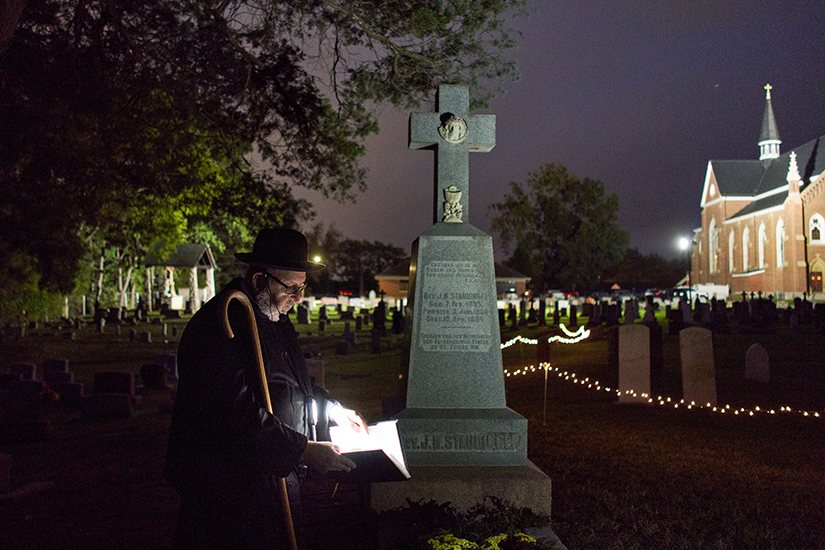
Drinking with the Saints, Cemetery Walk are ongoing parish traditions
As the sun set upon All Saints Parish in St. Peters on a breezy weeknight in October, a group of adults settled into their seats near a pavilion by the church for a round of cocktails as they shared stories about a pair of holy souls.
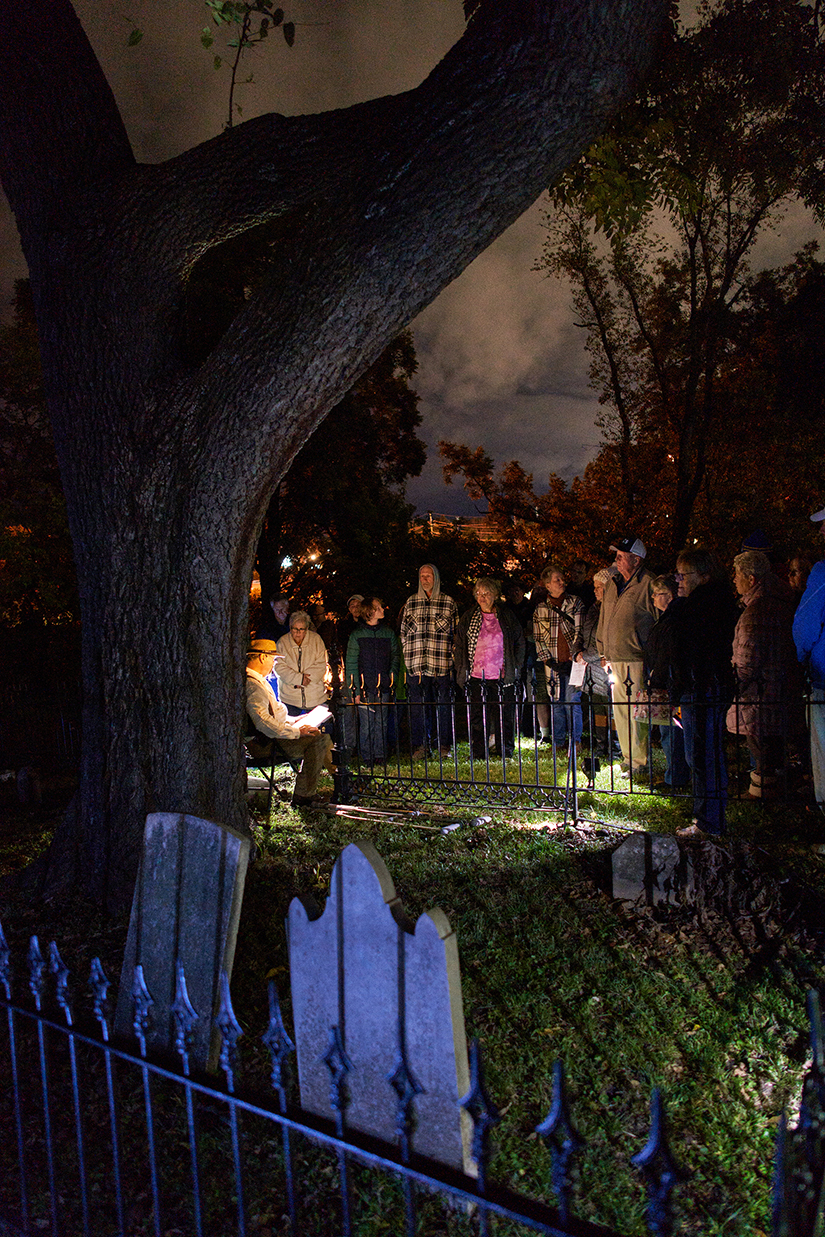
These were no ghost stories, but rather tales of the saints — St. Francis of Assisi and St. Teresa of Avila, actually — as part of an ongoing Holy Happy Hour organized by the parish’s adult faith development committee.
In honor of its 200th anniversary, All Saints has hosted the monthly gatherings over the past year to share in the lives of the saints and discuss how they can be an example to all. Cocktails were served using recipes from “Drinking With the Saints,” a book featuring themed drinks and stories of the saints.
“They’re not just statues in a church, but they’re models for our lives and how we can live our faith by their guidance,” said senior associate pastor Father Bob Suit, who oversees the adult faith development committee.
St. Teresa of Avila and St. Francis of Assisi lived in tumultuous times, said Stephen Paur, a member of the adult faith team who presented short biographies about the two. Francis lived in the 12th and 13th centuries and Teresa in the 16th century; both of them came from wealth, yet they both felt called to follow Christ.
St. Francis of Assisi had an easy life under a father who was a successful cloth merchant. Eventually, he had an awakening and began to spend more time in prayer, Paur told the group. “He went off to a cave and wept for his sins,” he said. “Sometimes God’s grace overwhelmed him with joy, but his life couldn’t just stop for God: There was a business to run and customers to await.”
In his search for conversion and while in prayer, he heard: “Francis, repair my Church.” He relinquished his possessions and his earthly family, saying, “Pietro Bernardone is no longer my father,” Paur said. “From now on, I can say with complete freedom: ‘Our Father, who art in heaven.’ … From then, Francis had nothing and everything.”
St. Francis founded the Franciscan Order and often preached about returning to God and obedience to the Church. He encouraged others to sell their goods, give to the poor and to take up their cross daily. “He was going to do what no one else thought possible: live by the Gospel,” Paur said. He showed honor, respect and love to every person he met and had a deep care for all of God’s creation.
St. Teresa, who at an early age failed an attempt to seek martyrdom, eventually became a consecrated religious. She was known for her reformation of the Carmelites, returning the order to a more strict observance of their original rules, such as cloistering. She also was known for her contemplative prayer life. Her description of mental prayer was that it was “nothing more than friendly intercourse and frequent solitary converse with Him who knows and loves us,” Paur said.
St. Teresa also spoke about the importance of keeping good and holy company, and she made it a practice to observe the people in her life who had a tendency to either draw her closer to or further away from God.
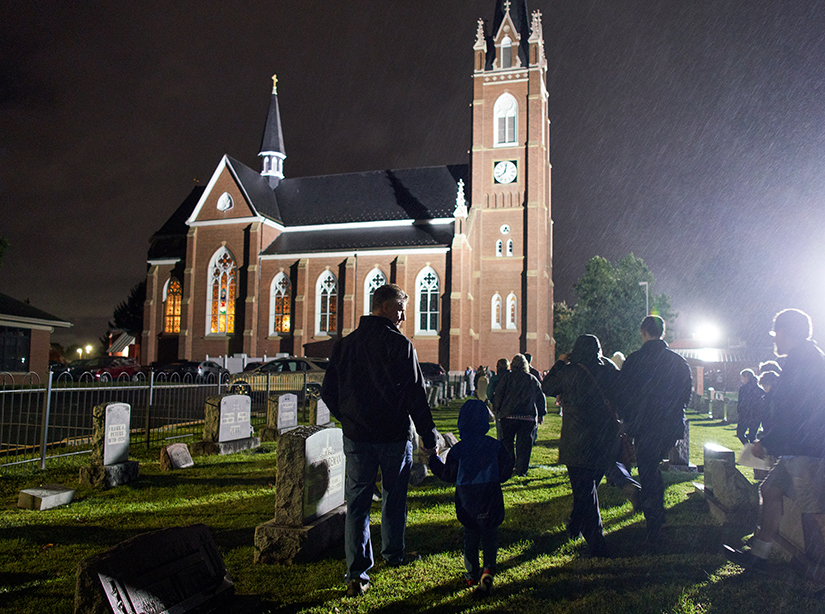
After his presentation, Paur prompted them to reflect: What does mental prayer mean to you, and do you feel you pray like this? And how do we qualify the company that we keep?
Several attendees shared that their internal conversations with God may happen in times where they’re giving thanks, in humorous moments and even in times of frustration. Veronica Paur, Stephen’s wife, said she doesn’t have a set time for prayer, but rather carries on in conversation with God “all day long. It’s continual … it’s in my head, ever since I was a child.”
Others shared the importance of surrounding yourself with good, holy people. But there’s also something to be learned from those who aren’t always a good influence, some added.
“You have to have those people around you to hold you accountable and to keep you on track,” Tania Willmann said. “It’s good to be outreaching and evangelizing, but when you don’t have those people around you to hold you accountable, that’s when you get in trouble.”
Willmann has helped organize events under the umbrella of the adult faith committee. She said the activities are meant to invite people to become more involved in the parish and to grow deeper in their faith — and ultimately create within them a desire to share the Good News with others. Other activities have included movie nights and a couples’ night out.
“We want people to gather, we want them to have fun,” she said. “We’re trying to build community and want them to feel like it’s OK to get together and talk about God and build those relationships.”
Remembering the souls of the departed
Later in the week, parishioners reconvened for a Cemetery Walk. The every-other-year tradition includes an evening walk through the parish’s cemetery, which dates to 1835, to hear the stories of some of the people who are buried there. Proceeds from ticket sales go toward upkeep of the cemetery and to restore 42 grave markers that were vandalized last spring.

Attendees were guided through the cemetery along several grave sites, where they met parishioners dressed in character. Todd Mesler, a longtime parishioner and member of All Saints’ evangelization committee, played the role of Bardo Weinerth, an early benefactor of the church who ran a general store in St. Peters in the 1800s. After Bardo died, his wife Teresa supported several additions to the church, including the steeple and the sacristy.
The Cemetery Walk “brings to life people who have done so much for our parish,” Mesler said. “It’s only there because of the people who have gone before us and the people who are here today, and this is a great reminder we are all called to be saints, but we have to do it now, we have to do it every day. We need to ask, what can we do to keep bring people to Jesus, spreading His word to bringing them into communion?”
Among the earliest burials include two of its founders, Etienne Bernard, who fought in the Revolutionary War and lived from 1752-1831; and George Gatty, one of the first Italian immigrants to the area, who lived from 1752-1826. Others featured on the walk included Henry Huellewig, a longtime maintenance man for the church and school, who lived from 1862-1941; longtime pastor Father Nicholas Staudinger, who came to the parish shortly after his ordination in 1860; and Sister Mary Olga Mueller, a Sister of the Most Precious Blood of O’Fallon, who was the principal during the first years of the current school building, constructed in 1919.
Paula Dotson, a longtime parishioner who served as one of the evening’s guides, said remembering the history is important to inform the future. “I think it’s good to remember the past to remember what people did,” she said. Pointing to the current church building (All Saints’ fourth church building in its 200-year history), she said, “that church was built by 50 families who lived here at the time. To remember what they did and what they went through — it gives you a better appreciation for where it is today.”
Drinking with the saints
St. Teresa of Avila

When she was a girl, Teresa of Avila (1515-1582) dreamed of becoming a martyr, so she and her brother set off for the land of the Moors. Their plan was thwarted by an uncle, and they were returned to their mother. They also tried to become hermits, but that plan didn’t work, either. St. Teresa eventually joined the Carmelites and helped to reform the order. She was declared a Doctor of the Church for her deep psychological and spiritual insights on achieving holiness. She is the patron of those who suffer from headaches and who are ill. Her feast day is Oct. 15.
>> Time Warp
Teresa died on the same day that the Gregorian calendar replaced the Julian calendar, an adjustment that required removing 10 days from the year 1582. The Time Warp is a remembrance of the unusual circumstances in which she entered into the eternal life.
2⁄3 oz. melon liqueur
¼ oz. blue curacao liqueur
¼ oz. raspberry liqueur
½ oz. coconut rum
½ oz. pineapple juice
1 cherry for garnish
Pour all ingredients into a shaker filled with ice and shake 40 times. Strain into a cocktail glass and garnish with a cherry.
St. Francis of Assisi
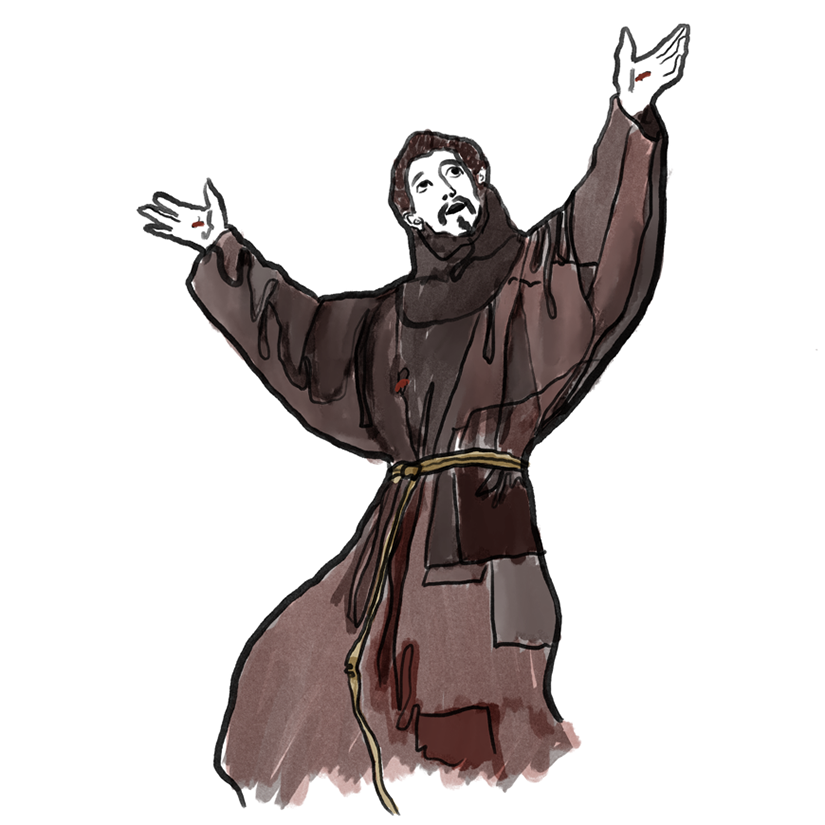
Born Giovanni di Pietro di Bernardone, St. Francis (c. 1181-1226) was the son of a wealthy cloth merchant. “Francesco,” as he was nicknamed by his father, had a dramatic conversion to a life of poverty after several experiences, including hearing a proclamation of the Gospel passage, “take neither gold nor silver.” He renounced his possessions and his family and eventually became the founder of the Franciscan Order. He was never ordained a priest, remaining a deacon throughout his life. St. Francis is considered the patron of animals and the environment. His feast day is Oct. 4.
>> St. Francis Cocktail
The St. Francis cocktail is believed to be the prototype of the modern martini.
2 oz. gin
1 dash vermouth
1 dash orange bitters
Pour ingredients into a shaker and shake 40 times. Strain into a cocktail glass and garnish with olives.
Excerpts from “Drinking with the Saints: The Sinner’s Guide to a Holy Happy Hour,” by Michael P. Foley
Feasts of All Saints, All Souls
The Church celebrates the Solemnity of All Saints on Nov. 1, originally instituted to honor the Christian martyrs of the late Roman Empire. The day is a time to honor the women and men recognized by the Catholic Church for their lives of holiness, and for the saints unknown. The feast of All Saints is a Holy Day of Obligation.
On Nov. 2, the Church also observes the feast of All Souls, remembering those who are in purgatory and still on the path to sainthood in God’s heavenly kingdom. The Church teaches that it’s a spiritual work of mercy to pray for the souls of the faithful departed, as none of us knows a person’s final judgement by God at death. The 14th Century mystic St. Gertrude was given a prayer from Jesus for souls in purgatory:
Eternal Father, I offer You the most Precious Blood of Your Divine Son, Jesus, in union with the Masses said throughout the world today, for all the Holy Souls in Purgatory, for all sinners everywhere, for sinners in the universal Church, those in my own home and within my family. Amen.
As the sun set upon All Saints Parish in St. Peters on a breezy weeknight in October, a group of adults settled into their seats near a pavilion by the … All Saints Parish in St. Peters remembers the lives of the saints, holy souls through activities to evangelize the community
Subscribe to Read All St. Louis Review Stories
All readers receive 5 stories to read free per month. After that, readers will need to be logged in.
If you are currently receive the St. Louis Review at your home or office, please send your name and address (and subscriber id if you know it) to subscriptions@stlouisreview.com to get your login information.
If you are not currently a subscriber to the St. Louis Review, please contact subscriptions@stlouisreview.com for information on how to subscribe.

